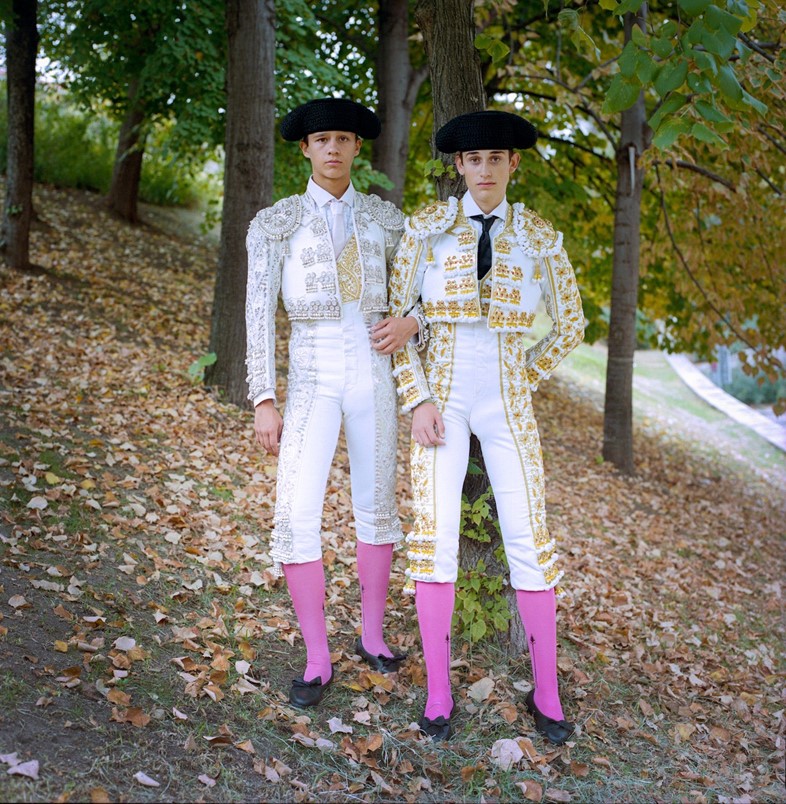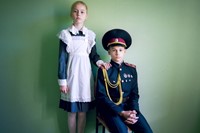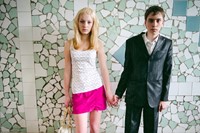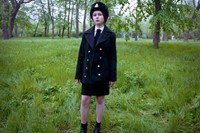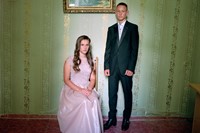From rookie bullfighters to primped-up prom-goers, the adolescents in the photographer’s new book are deep in the thrall of the roles assigned to them
Michal Chelbin has enormous faith in the power of two things: youth and the camera. Throughout her career, the Israeli photographer has sought to capture the emotional ambiguities and fledgling contradictions that are so distinctive to young people. Her new book, How to Dance the Waltz, takes us into the matador schools of Seville, the military academies of Ukraine’s Dnepropetrovsk region and the school grounds of Kiev on the eve of prom. “Uniforms are symbolic of the adult world,” says Chelbin. “I’m fascinated by the tension between this outer world and the inner lives of children. It’s with the camera that I’m trying to uncover a certain truth.”
Despite the geographic and cultural chasms which separate Chelbin’s subjects, we encounter the same adolescent angsts bubbling beneath their posturings. A teen coyly twists her golden locks, but her tensed legs look uneasy as they emerge from her gilded prom dress. On the other side of Europe, rookie bullfighters don monteras, swords and silver-sequined jackets. Their “suit of lights” attire is steeped in a machismo mythology in which symbols of death and sex coalesce, but there is boyish bashfulness in their contrapposto stances – their skin-tight pants a bit too snug for their liking.
Chelbin’s interest in the performance of masculinity took centre stage in her 2010 book, The Black Eye. Here, she snapped bruised Eastern European boy wrestlers fresh from the fight. Though, as Chelbin reflects, they weren’t just grappling with their feeble foes: “This fantasy of manhood was drilled into them all day long, and they had to live up to it. Fighting would make them world champions.”
In comparison, the cadets of the Ukrainian military academies, immaculately clad in oversized uniforms and shoes shiny with polish, appear more guarded; the deadpan expressions they wear embody the authoritarian ideals of their elders. With conscription for men reinstated in 2014, owing to the war with Russia, these tiny soldiers are products of a regime hell-bent on manufacturing tomorrow’s generation of elite governing officers. Ruler-straight postures are the orders of the day.
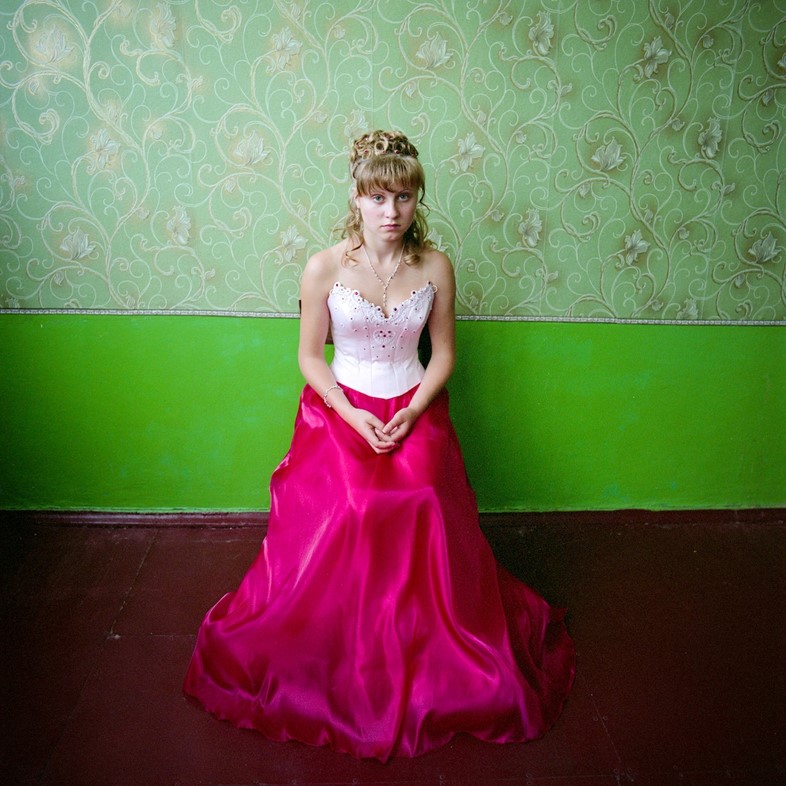
“As for the girls in these academies, they are defined in relation to the boys,” says Chelbin. “They are taught to support them, to compliment them … and, of course, to dance the waltz.” We find these young women sat knees together, their solemn faces framed by antiquated lace collars. Elsewhere, they stand with their hands rested on the shoulders of their seated male peers, re-enacting outmoded portrait etiquette. Traditional gender roles also unfold at the school grounds; prom-goers, sporting glitzy ballgowns and sharkskin suits, pose as heterosexual couples, though, given the ongoing resistance to LGBTQ+ rights by conservative groups, few are likely to be out-and-proud. High school proms have long been cherished as celebratory rites of passage, yet the disenchanted glimmers in the eyes of these pupils speak of something otherwise.
The youths in How to Dance the Waltz are not the fearless runaways chronicled by Justine Kurland, or the rebel roof toppers immortalised by Ren Hang. They are tethered to age-old institutions which, in their quests to forge futures, corrupt childhoods. The adult world looms large, but, for Chelbin, some things never change. “Once they go back home and strip off their uniforms, all this falls away. At the end of the day, they’re just kids.”
How to Dance the Waltz by Michal Chelbin is published by Damiani.
